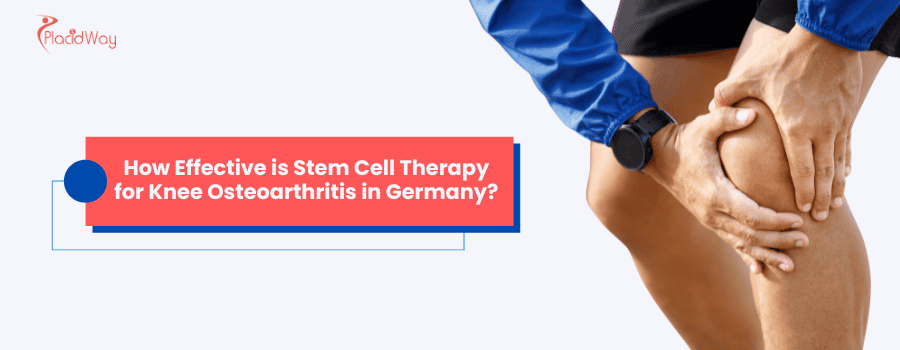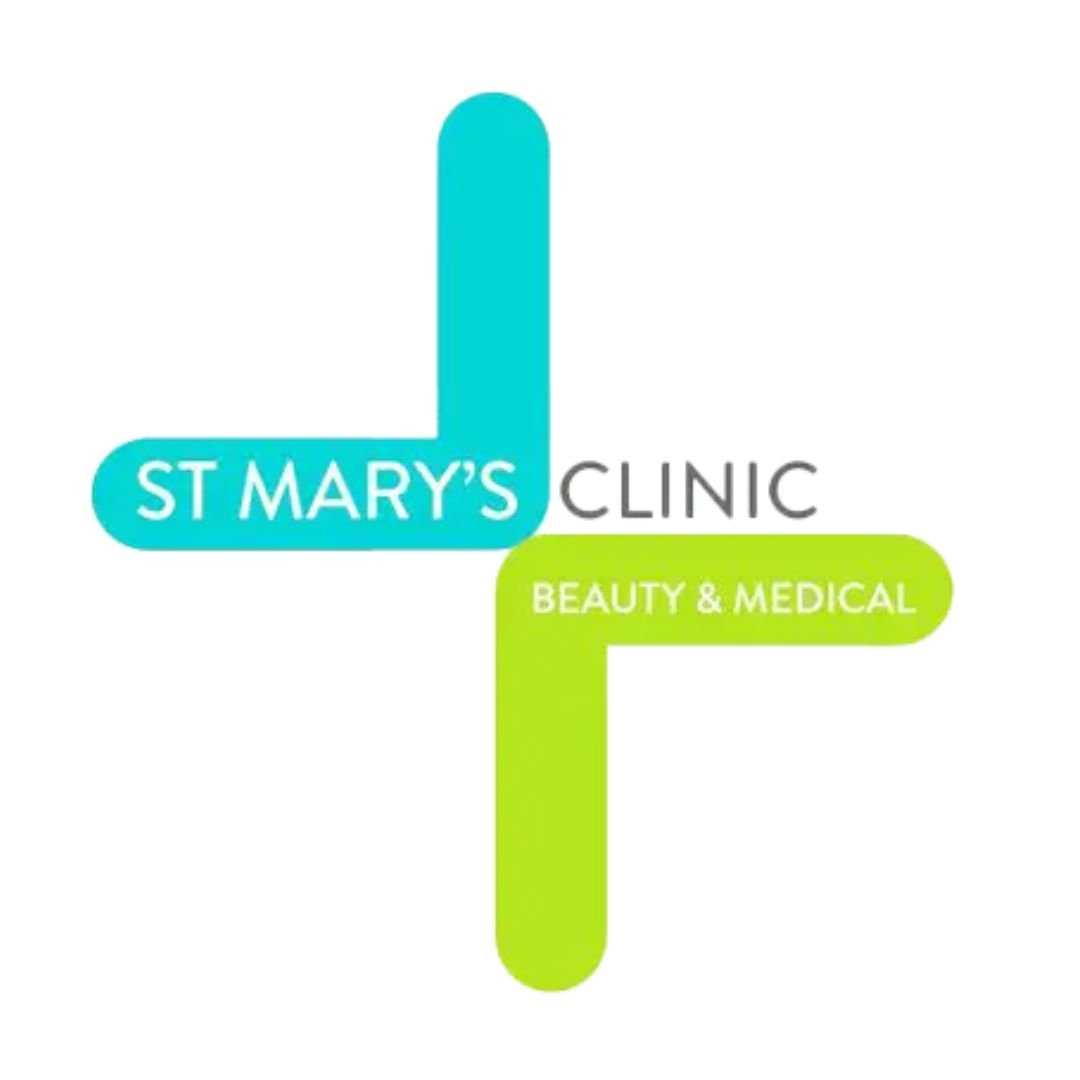How Safe is Stem Cell Therapy for Knee Osteoarthritis in Germany?
"Stem cell therapy for knee osteoarthritis in Germany shows promising results in reducing pain and improving joint function, wdivith many clinics reporting positive outcomes and high patient satisfaction."

Knee osteoarthritis (OA) is a debilitating condition affecting millions worldwide, leading to pain, stiffness, and reduced mobility. As traditional treatments often focus on managing symptoms rather than addressing the root cause, many individuals seek innovative solutions. Stem cell therapy has emerged as a hopeful option, particularly in countries like Germany, which are at the forefront of regenerative medicine. This blog post explores the effectiveness of stem cell therapy for knee osteoarthritis in Germany, delving into how it works, its benefits, potential risks, and what patients can expect. We aim to answer common questions and provide a comprehensive overview for those considering this advanced treatment.
What is Stem Cell Therapy for Knee Osteoarthritis?
"Stem cell therapy for knee osteoarthritis involves injecting specialized stem cells into the affected joint to promote tissue repair, reduce inflammation, and alleviate pain."
Stem cell therapy is a cutting-edge regenerative medicine approach that utilizes the body's own healing capabilities. For knee osteoarthritis, it typically involves extracting stem cells, often from the patient's bone marrow or adipose (fat) tissue, processing them, and then injecting them directly into the damaged knee joint. These stem cells possess unique properties, including the ability to differentiate into various cell types, such as cartilage cells (chondrocytes), and to release growth factors and anti-inflammatory substances. The goal is to stimulate the natural regeneration of damaged cartilage, reduce inflammation, and thereby improve joint function and reduce pain associated with osteoarthritis. This approach is considered minimally invasive compared to surgical interventions like knee replacement.
How Does Stem Cell Therapy Work for Knee Osteoarthritis?
"Stem cells work by regenerating damaged cartilage, reducing inflammation, and modulating the immune response within the knee joint, leading to pain relief and improved function."
The mechanism of action for stem cell therapy in knee osteoarthritis is multi-faceted. When injected into the knee, mesenchymal stem cells (MSCs)—the most commonly used type—can sense the damaged environment. They release various bioactive molecules that help to:
- Reduce Inflammation: Stem cells have strong anti-inflammatory properties, which can help calm the inflamed joint tissues characteristic of osteoarthritis.
- Modulate Immune Response: They can regulate the immune system, preventing it from contributing further to cartilage degradation.
- Promote Tissue Regeneration: While direct differentiation into cartilage cells is a complex process, stem cells primarily work by signaling to existing cells to promote their repair and regeneration. They secrete growth factors and cytokines that encourage the body's own cells to repair damaged tissue and potentially lay down new cartilage-like matrix.
- Alleviate Pain: By reducing inflammation and promoting tissue healing, stem cells indirectly contribute to significant pain reduction.
This combination of effects aims to slow the progression of osteoarthritis, improve joint mechanics, and enhance the patient's quality of life.
What are the Benefits of Stem Cell Therapy for Knee Osteoarthritis?
"Benefits of stem cell therapy for knee osteoarthritis often include significant pain reduction, improved joint function, and the potential to delay or avoid knee replacement surgery."
Patients undergoing stem cell therapy for knee osteoarthritis in Germany often report a range of benefits. One of the most significant advantages is the potential for substantial pain relief, which can allow individuals to reduce their reliance on pain medications. Furthermore, many patients experience improved joint mobility and function, making everyday activities easier and enhancing their overall quality of life. For individuals who are not yet candidates for total knee replacement or wish to avoid it, stem cell therapy offers a less invasive alternative that may postpone or even negate the need for surgery. The procedure is typically outpatient, leading to a quicker recovery time compared to traditional surgical interventions.
Is Stem Cell Therapy for Knee Osteoarthritis Safe in Germany?
"Yes, stem cell therapy for knee osteoarthritis in Germany is generally considered safe, with clinics adhering to strict medical standards and using autologous (patient's own) cells to minimize risks."
Germany has a highly regulated healthcare system, and clinics offering stem cell therapy operate under stringent medical guidelines. The use of autologous stem cells, meaning cells harvested from the patient's own body, significantly reduces the risk of immune rejection or allergic reactions. As with any medical procedure involving injections, there is a minor risk of infection at the injection site or temporary swelling and discomfort. However, serious adverse events are rare. German clinics prioritize patient safety, often performing thorough pre-treatment evaluations to ensure suitability and closely monitoring patients post-procedure.
What is the Success Rate of Stem Cell Therapy for Knee Osteoarthritis in Germany?
"The success rate of stem cell therapy for knee osteoarthritis in Germany is promising, with many studies and clinics reporting significant improvement in pain and function for 70-80% of patients, though individual results can vary."
While individual outcomes can vary based on factors such as the severity of the osteoarthritis, the patient's overall health, and the type of stem cells used, many German clinics and research studies report encouraging success rates. Some clinical trials indicate that a significant percentage of patients, often ranging from 70% to 80%, experience clinically meaningful improvements in pain and functional scores after stem cell therapy. These improvements can last for extended periods, potentially delaying the need for more invasive procedures. It is important for patients to have realistic expectations and to discuss potential outcomes with their treating physician.
Who is a Good Candidate for Stem Cell Therapy for Knee Osteoarthritis?
"Good candidates for stem cell therapy for knee osteoarthritis typically include individuals with mild to moderate osteoarthritis who have not found sufficient relief from conservative treatments but wish to avoid or delay surgery."
Ideal candidates for stem cell therapy for knee osteoarthritis are usually those in the earlier to moderate stages of the disease (e.g., Kellgren-Lawrence grades 1-3). Patients with severe, "bone-on-bone" osteoarthritis may have less favorable outcomes, though some still experience benefits. Other factors that make a person a good candidate include:
- Persistent knee pain and functional limitations.
- Failure to respond adequately to conventional non-surgical treatments like physical therapy, medication, or corticosteroid injections.
- Overall good health, without active infections or certain underlying medical conditions that might contraindicate the procedure.
- Realistic expectations about the potential outcomes of the therapy. A comprehensive evaluation by a specialist in Germany will determine the suitability of the treatment for each individual case.
What Types of Stem Cells Are Used for Knee Osteoarthritis in Germany?
"In Germany, the most common types of stem cells used for knee osteoarthritis are autologous mesenchymal stem cells (MSCs) derived from bone marrow aspirate concentrate (BMAC) or adipose (fat) tissue."
German clinics predominantly use autologous stem cells for knee osteoarthritis treatment. The two primary sources are:
- Bone Marrow Aspirate Concentrate (BMAC): This involves extracting a small amount of bone marrow, typically from the patient's hip bone, concentrating the stem cells, and then injecting the concentrate into the knee. Bone marrow is a rich source of MSCs.
- Adipose-Derived Stem Cells (ADSCs): These stem cells are obtained from the patient's own fat tissue, usually through a mini-liposuction procedure. Adipose tissue is another abundant source of MSCs, and the harvesting procedure can be less invasive than bone marrow aspiration.
Both sources have shown promise in clinical applications for osteoarthritis, and the choice between them often depends on the clinic's expertise, the patient's condition, and the doctor's recommendation.
What is the Procedure for Stem Cell Therapy for Knee Osteoarthritis?
"The stem cell therapy for knee osteoarthritis procedure typically involves harvesting stem cells from the patient's bone marrow or fat, processing them, and then injecting the concentrated cells into the affected knee, usually on an outpatient basis."
The procedure generally follows these steps:
- Harvesting: A small amount of bone marrow is typically aspirated from the patient's iliac crest (hip bone) or adipose tissue is collected through a mini-liposuction from the abdomen or thigh.
- Processing: The collected sample is then processed in a specialized laboratory to concentrate the stem cells. This often involves centrifugation to separate the stem cells from other components.
- Injection: The concentrated stem cell solution is then carefully injected into the affected knee joint. This injection is often performed under ultrasound or fluoroscopic guidance to ensure precise placement.
- Post-Procedure Care: Patients typically go home the same day. Recovery involves a period of rest, followed by a gradual return to activity, often with physical therapy. The entire procedure is minimally invasive and generally well-tolerated.
What is the Recovery Time After Stem Cell Therapy for Knee Osteoarthritis?
"The recovery time after stem cell therapy for knee osteoarthritis is generally short, with most patients resuming light activities within a few days and gradually increasing their activity level over several weeks to months."
One of the significant advantages of stem cell therapy is its relatively quick recovery period compared to surgical procedures. Most patients can walk and bear weight on the treated knee shortly after the injection.
- Immediate Post-Procedure: Some mild soreness, swelling, or bruising at the injection site is common for a few days.
- First Few Weeks: Patients are typically advised to rest and avoid strenuous activities. Light walking and gentle exercises may be encouraged.
- Weeks to Months: Over the next several weeks to months, as the stem cells begin to work and tissue regeneration is promoted, patients gradually increase their activity levels under the guidance of their physician or physical therapist. Full benefits may become apparent over several months as the healing process unfolds. The specific recovery timeline can vary based on the individual and the severity of their condition.
Are There Any Side Effects of Stem Cell Therapy for Knee Osteoarthritis?
"Side effects of stem cell therapy for knee osteoarthritis are generally mild and temporary, including localized pain, swelling, or bruising at the harvest and injection sites, with serious complications being rare."
Because autologous stem cells (from the patient's own body) are used, the risk of adverse reactions is minimal. The most common side effects are usually related to the harvesting and injection sites:
- Pain and Discomfort: Mild pain, soreness, or bruising at the site where stem cells were harvested (e.g., hip or abdomen) and at the injection site in the knee.
- Swelling: Temporary swelling around the knee joint.
- Infection: As with any injection, there's a very low risk of infection, which clinics mitigate by using sterile techniques. These side effects are typically temporary and resolve within a few days to a week. Serious complications like nerve damage or significant bleeding are exceedingly rare.
How Long Do the Effects of Stem Cell Therapy for Knee Osteoarthritis Last?
"The effects of stem cell therapy for knee osteoarthritis can last for a significant period, with many patients reporting sustained improvement in pain and function for 1 to 3 years or even longer, though results vary."
The longevity of the benefits from stem cell therapy can vary among individuals. While it's not considered a permanent "cure" for osteoarthritis, many patients experience long-lasting relief. Studies and clinical observations suggest that significant improvements in pain and function can endure for one to three years, and in some cases, even longer. The goal is to slow the progression of the disease and provide extended relief, potentially delaying or avoiding the need for joint replacement surgery. The actual duration of effectiveness can depend on factors such as the initial severity of the osteoarthritis, the patient's lifestyle, and adherence to post-treatment recommendations.
What is the Cost of Stem Cell Therapy for Knee Osteoarthritis in Germany?
"The cost of stem cell therapy for knee osteoarthritis in Germany typically ranges from €14,500 to €20,800, depending on the clinic, the specific type of stem cell used, and the extent of the treatment required."
The cost of stem cell therapy for knee osteoarthritis in Germany can vary based on several factors, including the reputation and location of the clinic, the experience of the medical team, the type of stem cells utilized (e.g., bone marrow-derived vs. adipose-derived), and whether additional treatments or follow-up appointments are included in the package. Patients should always request a detailed breakdown of costs from the clinic during their initial consultation. While it can be a significant investment, many patients consider it worthwhile given the potential for pain relief and improved quality of life without invasive surgery.
Are German Clinics Accredited for Stem Cell Therapy?
"Many German clinics offering stem cell therapy for knee osteoarthritis are highly accredited and adhere to rigorous international and national medical standards, ensuring high-quality care and patient safety."
Germany is renowned for its high standards in healthcare, and many clinics specializing in stem cell therapy are accredited by national and international bodies. These accreditations ensure that the clinics meet strict quality control measures, patient safety protocols, and ethical guidelines for regenerative medicine procedures. Patients considering treatment in Germany can research specific clinic accreditations and certifications to ensure they choose a reputable facility. This commitment to quality contributes to Germany's reputation as a leading destination for medical tourism, particularly for advanced treatments like stem cell therapy.
Does Stem Cell Therapy Regrow Cartilage in the Knee?
"While stem cell therapy can contribute to the regeneration of cartilage-like tissue, its primary mechanism involves promoting a healthier joint environment, reducing inflammation, and potentially slowing cartilage degradation, rather than complete regeneration of original cartilage."
The ability of stem cell therapy to fully "regrow" original, healthy hyaline cartilage in the knee is an area of ongoing research. While stem cells have the potential to differentiate into chondrocytes (cartilage-producing cells), the regeneration often results in a type of fibrocartilage, which is a fibrous, repair tissue, rather than the highly organized hyaline cartilage. However, even the formation of fibrocartilage, coupled with the anti-inflammatory and tissue-modulating effects of stem cells, can significantly improve joint function, reduce pain, and slow the progression of osteoarthritis. The focus is more on creating a more favorable environment for the knee's natural healing processes and preserving existing cartilage.
Stem Cell Therapy vs. Knee Replacement Surgery for Osteoarthritis
"Stem cell therapy is a minimally invasive option aimed at regenerating tissue and reducing inflammation, while knee replacement surgery is an invasive procedure that replaces damaged joint components, typically reserved for severe osteoarthritis."
Choosing between stem cell therapy and knee replacement surgery depends heavily on the severity of the osteoarthritis and individual patient needs.
- Stem Cell Therapy: This is a less invasive procedure, often performed as an outpatient treatment. It aims to harness the body's natural healing processes, potentially regenerating damaged tissue, reducing inflammation, and alleviating pain. It's often considered for mild to moderate cases, or for patients who wish to avoid or delay surgery. Recovery is quicker, and it preserves the natural joint.
- Knee Replacement Surgery: This is a major surgical procedure where the damaged parts of the knee joint are removed and replaced with artificial components. It is typically reserved for severe, end-stage osteoarthritis where conservative treatments no longer provide relief. While highly effective in reducing pain and restoring function, it involves a longer recovery period, significant rehabilitation, and potential surgical risks.
For many, stem cell therapy offers a bridge, providing relief and improving quality of life before joint replacement becomes the only viable option.
What Should I Ask a Clinic in Germany About Stem Cell Therapy?
"When considering stem cell therapy for knee osteoarthritis in Germany, you should ask about the specific type of stem cells used, the clinic's experience and success rates, the detailed treatment plan, potential costs, and post-procedure care."
To make an informed decision about stem cell therapy for knee osteoarthritis in Germany, it's essential to ask thorough questions:
- Specifics of the Procedure: What type of stem cells will be used (e.g., bone marrow, adipose)? How are they harvested and processed? Is imaging guidance (ultrasound, fluoroscopy) used during injection?
- Clinic's Experience and Success: How many knee osteoarthritis patients has the clinic treated with stem cells? What are their reported success rates? Can they provide patient testimonials or outcome data?
- Treatment Plan: What does the entire treatment protocol entail, including pre-treatment evaluations, the procedure itself, and post-procedure follow-up?
- Costs: Obtain a clear and detailed breakdown of all costs involved, including the procedure, consultations, follow-up, and any necessary medications. Are there any hidden fees?
- Risks and Side Effects: A comprehensive explanation of potential risks and common side effects.
- Post-Procedure Care: What are the recommendations for activity restriction, physical therapy, and long-term follow-up? Asking these questions will help ensure transparency and build confidence in your chosen clinic.
CTA: Ready to explore innovative solutions for your knee osteoarthritis? Visit PlacidWay to learn more about stem cell therapy options in Germany and connect with highly-rated clinics that can help you regain your mobility and improve your quality of life.


.png)




.png)
.png)
.png)
.jpg)





Share this listing